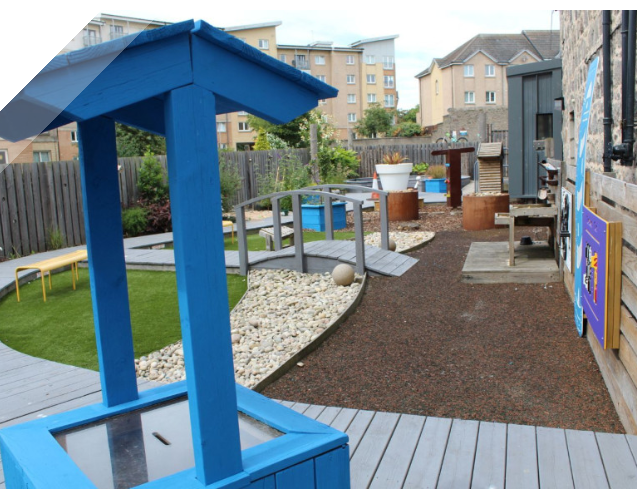Architecture students to redesign Aberdeen Science Centre garden

Aberdeen Science Centre has partnered with Robert Gordon University (RGU) to redesign its outdoor space and turn it into sustainable, interactive community science garden.
The STEM visitor attraction has invited The Scott Sutherland School of Architecture and Built Environment to help revamp its garden area.
The exciting project will see students and academic staff from The Scott Sutherland School represent RGU and take on the task of coming up with innovative designs for the visitor attractions outside space.
Bryan Snelling, chief executive officer at Aberdeen Science Centre, said: “We want to reinvigorate our garden space and turn it into an exciting and inspiring area which encourages visitors to Aberdeen Science Centre to explore their surroundings.”
Alongside members of the Aberdeen Society of Architects, The Scott Sutherland School students and academic staff will lead a series of charettes to come up with proposals for what could be achieved in the Aberdeen Science Centre garden.
It is hoped their design ideas will go on display at the centre for visitors to share their views.
Bryan Snelling explained: “The literal translation of charrette is cart, however in architecture terms it refers to an intense period of collaborative working to achieve transformative change.”
The process will also involve local children and regular visitors to Aberdeen Science Centre.
Mr Snelling continued: “We’re looking forward to engaging with both The Scott Sutherland School of Architecture and the Aberdeen Society of Architects and providing them with a working brief for the garden. It will be exciting to see what they come up with!” added Bryan. “Involving children and regular visitors to the Science Centre is key too, we are keen to ensure the final designs will deliver a fun and engaging experience.”
Professor Peter Exley, dean of the Scott Sutherland School of Architecture & Built Environment, and co-founder of the Chicago based, Architecture is Fun practice, is leading the project.
He said: “We are absolutely delighted to be leading the Aberdeen Science Centre Garden project. The Aberdeen Science Centre is a major visitor attraction in Aberdeen, that encourages us all to explore the wonders of science.
“The Scott Sutherland School of Architecture & Built Environment has a strong social ethos, and combines innovative thinking with new technologies, to facilitate the design of sustainable and imaginative public spaces.
“We look forward to engaging with the Science Centre, members of the Aberdeen Society of Architects and local community, to create a public space that offers visitors a meaningful experience that encourages both learning and play.”
The garden project represents a second partnership between Aberdeen Science Centre and Robert Gordon University. The centre recently received one of 17 grants awarded by the Royal Academy of Engineering to deliver Enchanted Engineering, a project which will also be delivered in collaboration with RGU.
The initiative, part of the Academy’s Ingenious public engagement programme, aims to empower young people to solve real-world engineering challenges which are introduced to them by professional engineers through creative storytelling.
Bryan Snelling added: “Developing strong relationships with educational institutions plays a key role in helping us to achieve our aim of promoting STEM subjects.
Based on Constitution Street near Aberdeen beach, ASC is home to almost 65 interactive exhibits, allowing people of all ages to discover topics including Space, Energy, Life Sciences, Engineering, and much more. Open seven days a week, the VisitScotland 5-star rated visitor attraction also offers exclusive venue hire as well as room hire for corporate, social and private events, alongside corporate sponsorship opportunities.
Through invaluable sponsorships, Aberdeen Science Centre will continue developing impactful science engagements to the North-east of Scotland and help to safeguard the legacy of Scotland’s oldest science centre.






















